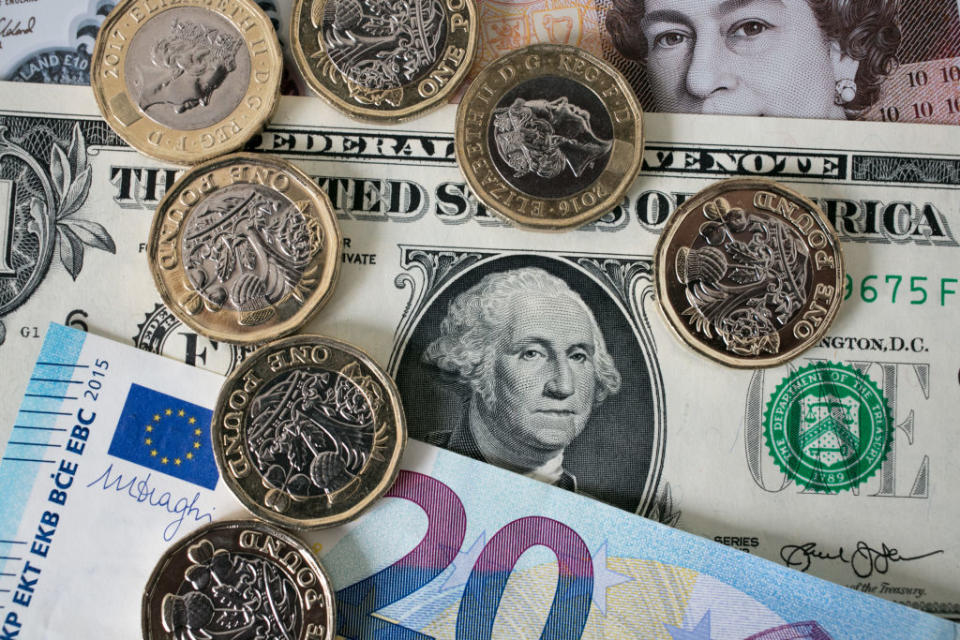Sterling slips back against dollar after reaching Brexit vote high

Sterling has hit its highest level against the dollar since the June 2016 Brexit referendum vote.
The pound gained more than 0.2% to $1.437 in morning trade, beating a post-Brexit vote high set in January.
However, following the publication of Office for National Statistics data showing wages rising still below inflation, sterling slipped back.
MORE: Jaguar Land Rover to cut 1,000 UK jobs as Brexit hits the motor industry
By mid-afternoon, £1 would buy $1.4308 – down 0.21% on yesterday.
A new report by the International Monetary Fund which predicts UK growth for 2019 to be behind the EU bloc also dented sterling’s recovery.

Sterling’s value had climbed on the back of speculation that the Bank of England will up interest rates in May.
It was also riding the back of the faltering dollar, which has been weighed down by the impact of president Donald Trump’s aggressive trade policies.
MORE: Sterling stumbles again as political tensions heighten talk of parity against euro
Connor Campbell, financial analyst at Spreadex, said: “Though clearly a tad disappointed by the fact the wage growth reading missed expectations, falling 0.2% against the dollar and 0.1% against the euro, this still leaves sterling at two and a half and 11 month highs against the greenback and the single currency, respectively.”
And, Michael Hewson, chief market analyst at CMC Markets UK, said: “The US dollar continued to sink yesterday, pressured to some extent by a rather bizarre tweet from President Trump that claimed that Russia and China were playing a devaluation game with their currencies, when the evidence doesn’t support that assertion at all.”
Headline wage growth miss may take some of the steam out of $GBP‘s rally for now. But core wage growth came in line with expectations 2.8% YoY (so all bonus noise). And lowest UK unemployment rate since 1975. Should keep $GBPUSD at elevated 1.43-1.44 levels (bit of profit-taking)
— Viraj Patel (@VPatelFX) April 17, 2018
Sterling was standing at around $1.50 just before the Brexit vote – and the Leave vote saw confidence drain away, sending the pound tumbling against most major world currencies.
It fell to as low at $1.20 in January of last year but while it hovered around the $1.31-$1.32 mark toward the end of 2017, it has risen steadily over recent weeks to hit the new highs.
MORE: Brexit: Confidence in UK economy turns positive for first time since Article 50 triggered
The ONS report did show that February marked the first month of “real wage growth”, which is where pay packets grow faster than the rate of inflation, for exactly a year.
Many analysts said this news, coupled with employment at its highest level in 42 years, would mean the pound would remain around the $1.42-43 mark for a while yet.
Derek Halpenny, European head of global markets research at MUFG, said sterling’s performance against the euro also indicated that the currency is now appreciating based on its own merits, rather than the weakness of other currencies.

 Yahoo Finance
Yahoo Finance 
